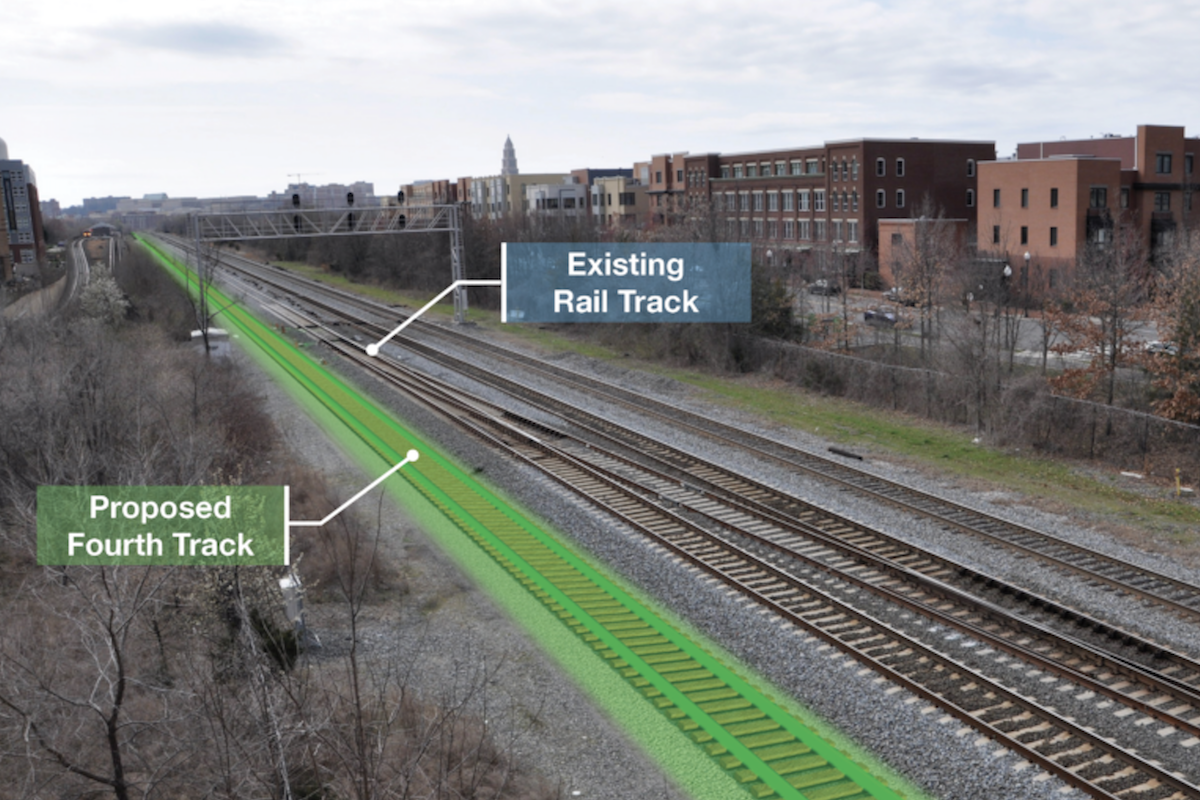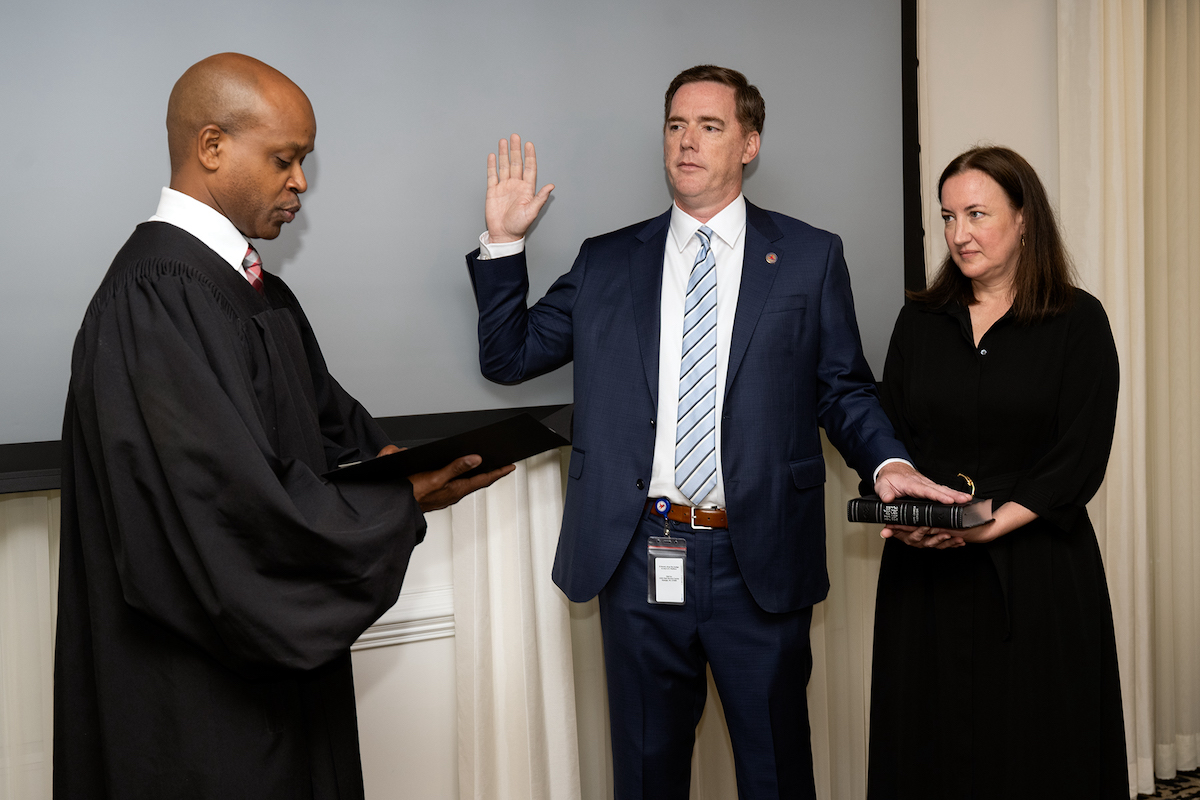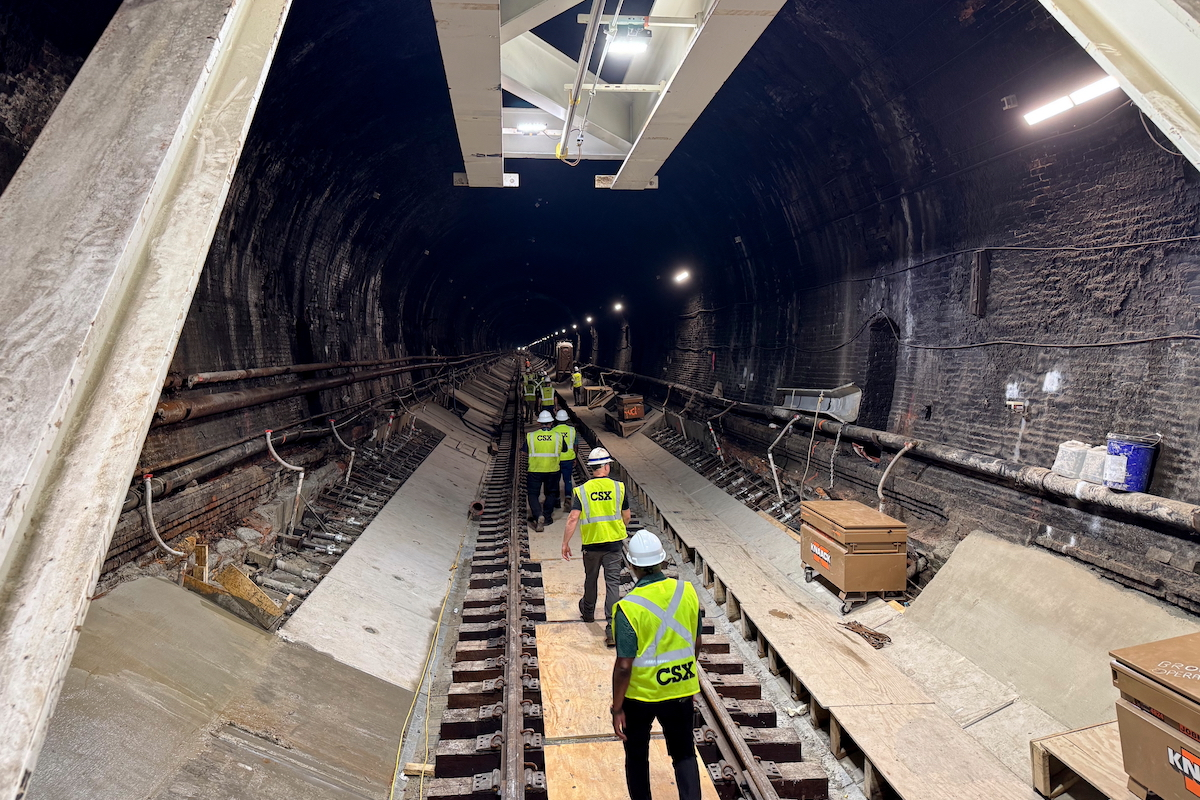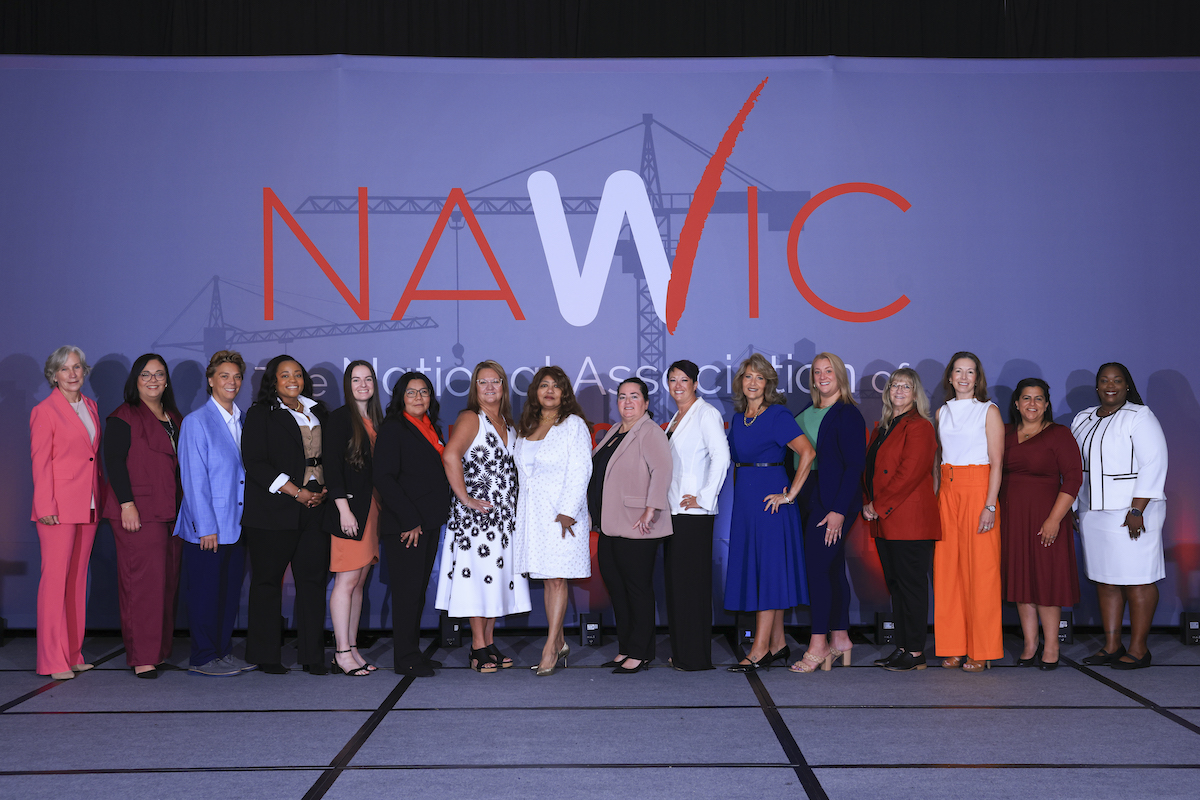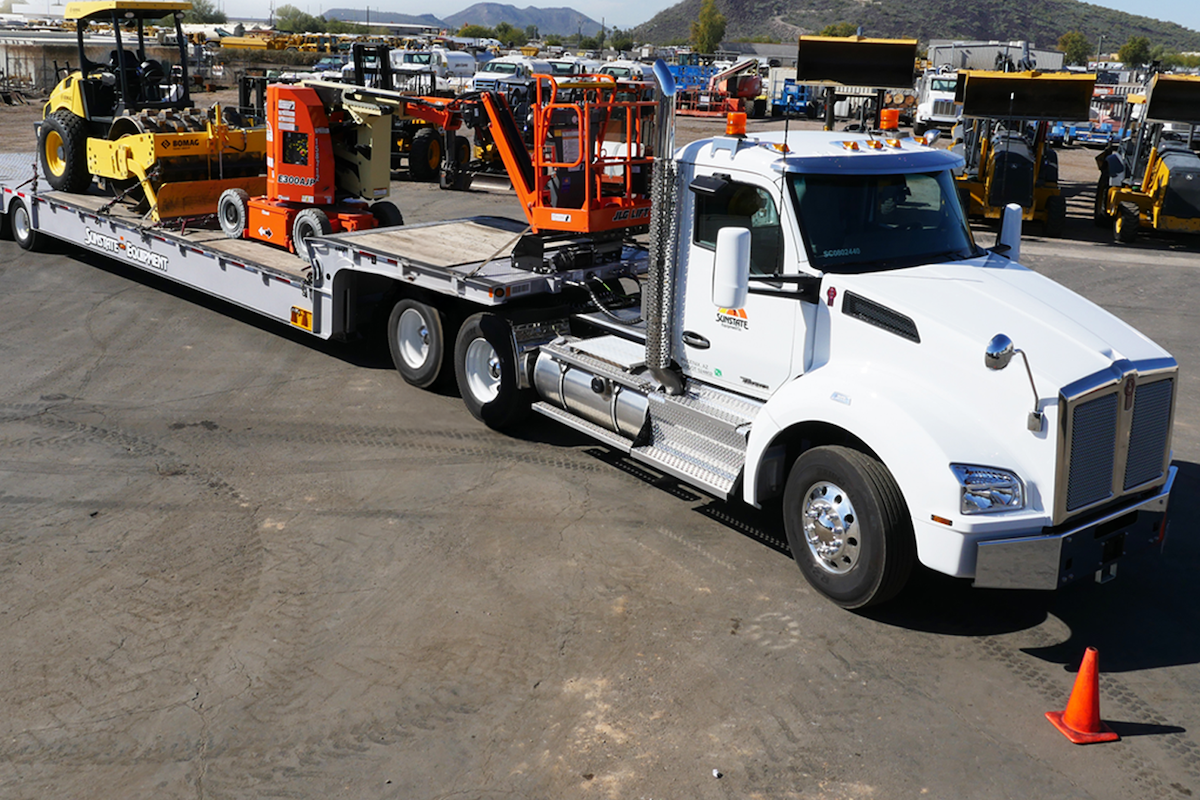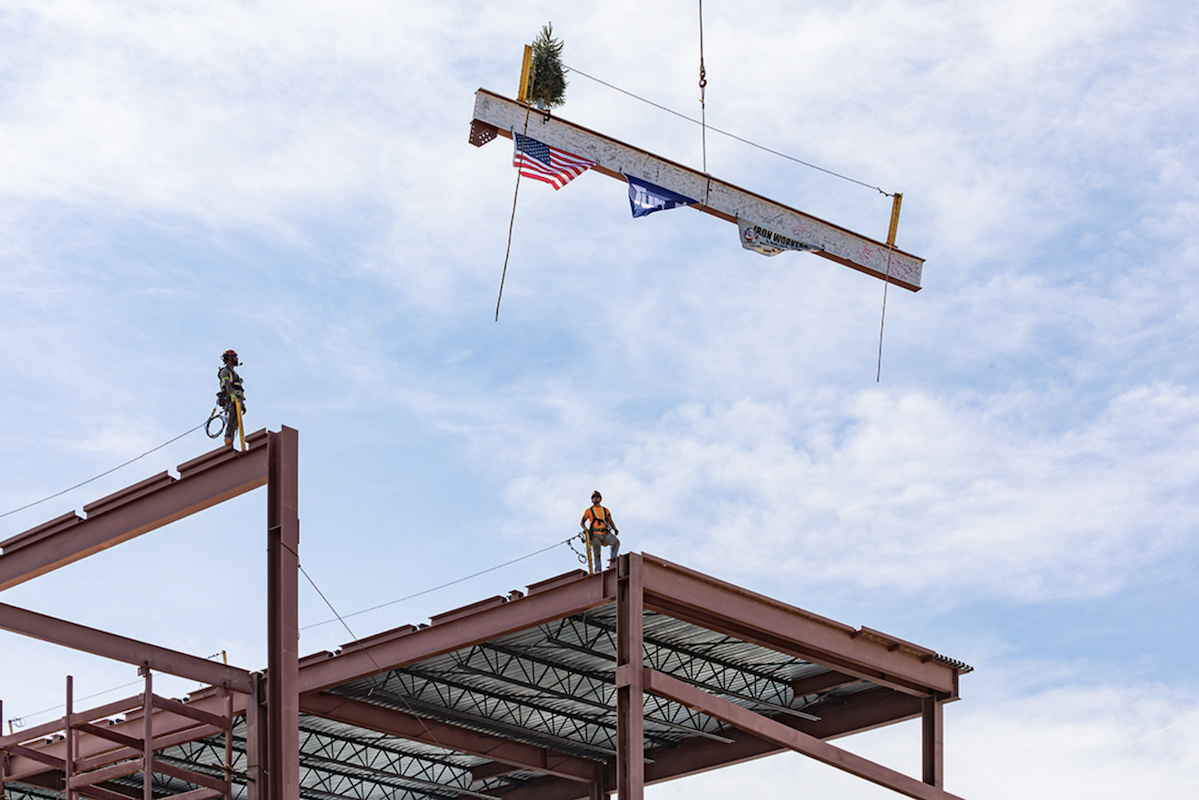The $1 billion Interstate 74 Mississippi River Bridge project in the Quad Cities of Iowa and Illinois also reconstructed approach roads and ramps in both states, resulting in six main contracts – four in Iowa and two in Illinois – with 113 subcontractors.
“At any one time, three or four of the main contracts were active,” said George Ryan, P.E., I-74 Corridor Manager, Wood Environment and Infrastructure Solutions. “There were times we had 450 tradespeople working across the 5.5-mile corridor. Orchestrating the communication so that everyone was working toward the same goals and one project didn’t hinder another took a lot of coordination.”
The project replaces two existing I-74 suspension bridges, one opened in 1935 and the other in 1960. Those bridges include two 11-foot-wide lanes in each direction and no shoulders, resulting in frequent travel restrictions due to peak-hour congestion and blockages from stalled vehicles and roadway maintenance activities.
To improve mobility and increase safety, the project expanded I-74 to three through lanes in each direction. The new bridges also added full shoulders and an entrance/exit lane in each direction. A 14-foot-wide pedestrian/bike path, separated from traffic on the eastbound bridge, features a scenic overlook with a glass floor. A hospital-sized elevator will provide increased access to the path.

| Your local Bomag Americas dealer |
|---|
| Linder Industrial Machinery |
Because the new bridges sit east of the original structures, the project also built new highway ramps and reconfigured connecting roads in Bettendorf, Iowa; Davenport, Iowa; and Moline, Illinois.
Construction began in July 2017 and the new I-74 westbound bridge opened in November 2020. The new eastbound bridge opened in early December 2021, a few weeks ahead of schedule. This spring, crews will work on landscaping and other finishing touches throughout the corridor.
The Iowa Department of Transportation serves as the lead agency for river bridge construction in partnership with the Illinois Department of Transportation, and each agency oversees the project’s road construction in their own state. The Federal Highway Administration funded 88.5 percent of the work, with Iowa and Illinois splitting the remaining costs. The cities of Bettendorf and Moline funded local enhancements.
The basket-handle arches span more than 774 feet of the 3,464-foot-long, 72-foot-wide structures. Crews started work on the first arch for the westbound bridge in March 2019 and finished 14 months later in May 2020; they started the second arch in July 2020 and finished 10 months later in May 2021.
“We experienced a lot more adverse weather on the first arch, but it was also a long learning curve,” Ryan said. “With the second arch, we were able to capitalize on some of the lessons we learned.”

| Your local Trimble Construction Division dealer |
|---|
| SITECH Mid-South |
The bridges’ prime contractor, Lunda Construction Co. of Black River Falls, Wisconsin, fabricated several tools to push and pull the arches into place. For instance, “When they put in the keystone piece on each side, they hung a large, false floor from the arch so they could stand up there and work,” Ryan said. “They also had beams with jacks and beams with comealongs to aid in moving the arch around and getting it in the right position.”
During construction of the first arch, “They did some retrofit on the fly to make the tools work better,” Ryan added. “Then, as they got to the second arch, they refabricated some of the tools, jacks, and comealongs to make them work a little smoother.”
Throughout bridge construction, Lunda used three large, lattice-boom crawler cranes from Manitowoc: an MLC300 with a 315-foot boom, an MLC650 with a 341-foot boom, and an 18000 with a 240-foot boom. The 18000 set the arch’s floor sections.
“The floor sections were some of the heaviest pieces out there,” Ryan said. “To save time, they pre-assembled them and put decking on before bringing them out to the river. The biggest floor sections were 160 feet long and close to 300 tons each.”
For the second bridge, because of a lack of space between structures on the Iowa side, Lunda added two, 400-foot-tall Liebherr tower cranes to help with the work.

| Your local Komatsu America Corp dealer |
|---|
| Linder Industrial Machinery |
“When they were put in, they were the tallest freestanding tower cranes in North America,” Ryan said.
First, “There’s not a lot of overburden in the river on top of the bedrock,” Ryan said. “At certain water velocities, the contractor couldn’t even keep the barges stationary to perform work on the arches.”
Wind and other weather conditions also added challenges. “We had some extremely cold winters, but they worked out there year-round, as much as conditions allowed,” Ryan said. “Flooding was also a factor. We had three different floods of short duration in 2019, then 56 days of record flooding in 2020 that hampered work on the river.”
In addition, recreational boat traffic created issues in the 800-foot-wide channel.
“If a crane sits on a barge holding a 125-ton piece of material on the end of a 340-foot boom and a passing boat creates a wake, the barge will rock a little – but the piece 340 feet in the air will rock a lot more,” Ryan said. “We had a public campaign to ask boaters to be careful and slow down through the work zone.”

| Your local Wirtgen America dealer |
|---|
| Dobbs Equipment (SC) |
The channel never closed to recreational boats during construction, but there were times the contractor worked with the Coast Guard to limit commercial boat traffic in order to set bridge pieces.
“These bridges were designed for a 100-year life with minimal maintenance, so the plans included a health monitoring system,” Ryan said. “There are different types of instrumentation on some of the arches and girders and in the concrete. They’ll help the DOT predetermine when maintenance needs to happen so they can get it done before it becomes critical. That proactive management will help extend the structure’s life.”
To reduce maintenance needs, the design also included stainless steel reinforcement on the bridge deck. “Usually, the concrete above reinforcement pops at some point due to corrosion of the reinforcement,” Ryan said. “That shouldn’t happen with the stainless steel.”
With the new structures now open, Ryan expects the contract for demolition of the old bridges to let in spring 2022. Already, the Quad Cities experienced the benefits of the expanded roadway.
“Once we opened the westbound structure, many of the traffic issues they’ve had for years disappeared,” Ryan said. “With access to all the new, modernized interchanges as well as the two new, four-lane bridges, the traffic situation now is so much better and safer.”
- Iowa Department of Transportation
- Illinois Department of Transportation

| Your local Volvo Construction Equipment dealer |
|---|
| Richmond Machinery & Equipment |
Construction Management/General Engineering Consultants:
- Wood Environment and Infrastructure Solutions
- HR Green
- Hutchison Engineering Inc.
- Images, Inc.
- Knight E/A, Inc.
- R.M. Chin & Associates, Inc.
Construction Engineering and Inspection Consultants:
- Bruner, Cooper & Zuck, Inc.
- HNTB
- McClure Engineering Associates, Inc.
Contractors:
- Main Bridge – Lunda Construction Co., Black River Falls, Wisconsin
- Iowa Viaduct – Helm Group, Freeport, Illinois, and Civil Constructors Inc., Franklin, Tennessee
- Iowa Mainline and Ramps – McCarthy Improvement Co., Davenport, Iowa
- Iowa Ramp and Mainline Storm Sewer – Valley Construction Co., Rock Island, Illinois
- Illinois Viaduct and Ramps – Kraemer North America, Plain, Wisconsin
- Illinois Mainline and Ramps – Walsh Construction Co., Chicago, Illinois
- Roadway Lighting – K&W Electric, Inc., Cedar Falls, Iowa
- Aesthetic Lighting – Minturn, Inc., Brooklyn, Iowa
- 240,389 cubic yards of concrete
- 70,603,759 pounds of structural steel
- 30,315,218 pounds of rebar
- 31 miles of conduit for the new bridges, along with 405 roadway luminaires and 928 aesthetic lights
Photos used with permission. ©2021 Iowa Department of Transportation.



















